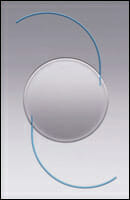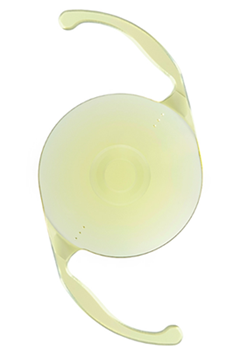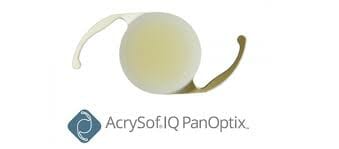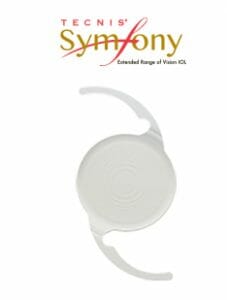When you have cataract surgery, it involves removing the natural lens of the eye, where cataracts form. This is the only way to remove the cataract that has developed on it.
Since cataract surgery leaves you without a natural lens, a critical part of having cataract surgery involves replacing the natural lens with an artificial lens.
The lens is crucial if you want to be able to see clearly after cataract surgery. This lens is called an intraocular lens, or IOL, and they come in several varieties.
There are also standard IOLs and premium IOLs. Premium IOLs can offer you better vision and are often used to correct presbyopia, a common condition in cataract patients.
Choosing an IOL can be difficult, but it helps if you know what premium IOLs are and what kinds are available. Keep reading for more information when it comes to choosing a premium IOL!
Standard IOLs vs. Premium IOLs
The standard IOL is called a monofocal lens. It’s a uniform lens that’s made only to have one focal point.

This focal point can either be set to help you see up close or far away. In some cases, patients that choose monofocal lenses get what’s called monovision.
Monovision involves having one eye set to see up close and the other eye set to see things far away. Monovision helps you see well at most distances, but you may still require glasses and especially reading glasses, when you want to see things up close.
Premium IOLs are designed to help you see at various distances and reduce or eliminate the need for visual aids like contacts and glasses. They come in several different varieties. We offer the following at Sierra Nevada Eye Center:
ReStor IOL
The ReStor lens is a multifocal IOL. Like other multifocal lenses, it’s made up of rings extending out from the center of the lens, alternating between two refractive powers.

One refractive power is set to see at a distance, and the other is set for seeing up close. Your eyes will naturally adjust to look through the right part of the lens, depending on what you see. The multifocal IOL allows patients to have excellent close-up vision and often reduces or eliminates the need for reading glasses.
Tecnis Multifocal IOL
The Tecnis multifocal lens is another kind of multifocal IOL. Like the ReStor, it’s composed of rings that alternate between two refractive powers and two different focal points.

The Tecnis and ReStor are comparable, and both have similar results. However, the Tecnis multifocal IOL specifically reduces the visual aberrations common in other brands of multifocal IOLs. For this reason, Tecnis patients tend to have a lower risk of visual problems after cataract surgery, like reduced night vision.

Vivity Extended Depth of Focus IOL
The Vivity IOL is an extended depth of focus lens that’s also non-diffractive. Most multifocal lenses are diffractive, with an abrupt change between different focal points divided into rings.
The Vivity lens is non-diffractive due to proprietary X-Wave technology, making vision with the Vivity lens smooth, blending the transition between each ring. This design allows users to see well when looking at both up-close and middle distances while also reducing or eliminating the need for reading glasses.
PanOptix Trifocal IOL

The PanOptix IOL is a trifocal lens. Like a multifocal lens, it’s divided into alternating rings with different refractive powers.
But unlike multifocal lenses, the rings switch between three different refractive powers rather than two. The result is clearer vision at a middle distance.
The PanOptix trifocal lens also offers patients excellent close-up vision without sacrificing the ability to see up-close for better intermediate vision. The PanOptix trifocal IOL allows patients to see well both up close and at intermediate distances with an extended focal point.

Tecnis Symfony Lens
The Tecnis Symfony Lens is an extended range of vision IOL. This latest technology works by extending your range of focus rather than alternating between set focal points like a multifocal or trifocal lens.
This allows for a greater depth to your visual field that lets you see well at all distances. The Symfony IOL can also reduce or eliminate the need for glasses while also enabling patients to see well while outdoors and participating in activities.
Choosing the Right IOL for You

When choosing an IOL, look over each of your options and talk to your ophthalmologist about your needs. One of the most important things to think about is your goals after cataract surgery.
Take your lifestyle and visual needs into account when making this decision. If you think of yourself as physically active and enjoy golfing or playing tennis, do you want to wear glasses after cataract surgery?
Are you comfortable using visual aids after having your cataracts removed? You should also think about how much you want to spend.
Because premium IOLs are a premium item, they are not something that insurance will usually cover. For this reason, they are often something that you’ll have to pay for out-of-pocket, so it’s good to consider your budget.
Most people who opt for a Premium IOL find the price is well worth it, but it’s essential to choose the best IOL for you and your needs. If you work with electronics and spend a lot of time looking at a screen during work or in your free time, having sufficient intermediate vision is an excellent way to help your eyes stay healthy.
Some multifocal IOLs inadvertently encourage patients to sit too close to the computer or TV to see it as clearly as possible. If you use screens a lot, the PanOptix trifocal IOL or the Symfony lens may be right.
If your focus is on reading or doing other focused tasks like sewing or knitting, a multifocal lens may be your best choice.
Your eye doctor can make recommendations on what IOL to get if you’re having trouble deciding. They’ll make this recommendation based on your eyes, as well as your individual needs and desires after cataract surgery.
Are you wondering if a premium IOL may be the right choice for you? Schedule a cataract screening at Sierra Nevada Eye Center in Reno, NV, today!


